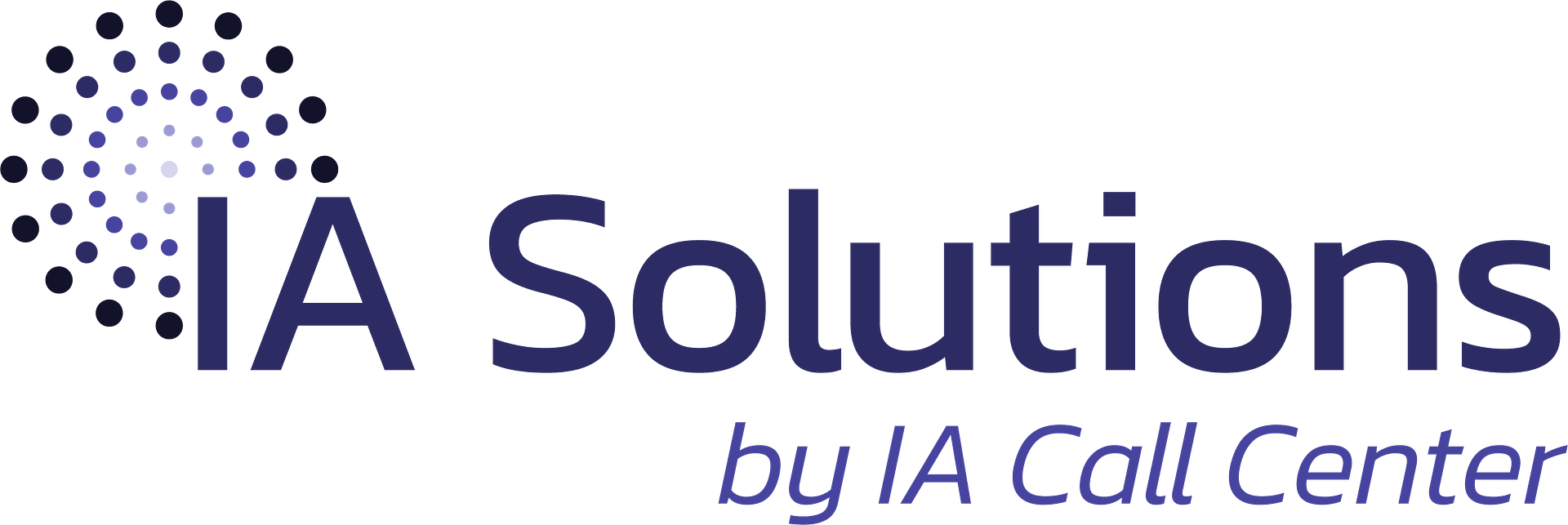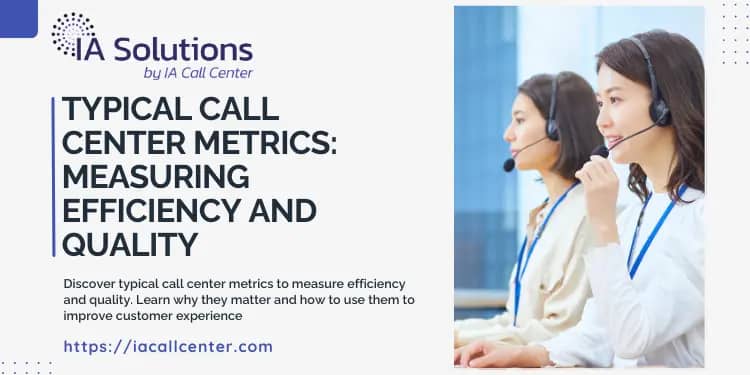Keeping a call center running smoothly is all about knowing your numbers. You can’t really fix what you don’t measure, right? That’s where typical call center metrics come in. They’re like the dashboard for your service team, showing you how things are going with efficiency and, just as importantly, how good the customer experience actually is. We’ll look at what these metrics are, why they’re important, and how to use them to make your call center better.

Key Takeaways
- Typical call center metrics help businesses understand how well their support teams are performing in terms of speed and customer satisfaction.
- Key metrics can be grouped into agent productivity, operational efficiency, and customer experience to provide a full picture of call center performance.
- Using these metrics for coaching and identifying areas for improvement, rather than just for evaluation, leads to better agent performance and happier customers.
What Are Typical Call Center Metrics and Why They Matter
Call center metrics are basically the scorecards for how well your phone support team is doing. Think of them as the numbers that tell you if things are running smoothly, if customers are happy, and where the team might be struggling. Without these numbers, it’s like trying to drive a car without a dashboard – you don’t really know if you’re going too fast, too slow, or if you’re about to run out of gas.

These metrics aren’t just for show; they’re really important for a few key reasons. First off, they help you understand if customers can actually reach you when they need to. Are calls getting answered, or are people stuck on hold forever? They also show how quickly and effectively problems are being solved. Did the customer get their issue sorted on the first try, or did they have to call back multiple times? And, of course, they give you a peek into how satisfied customers are with the whole experience.
The call center is often the first, and sometimes only, human interaction a customer has with a company. What happens during that interaction can make or break their overall perception of the brand. Measuring performance helps ensure these interactions are positive and productive.
Here are some of the main things these metrics help you figure out:
- Customer Accessibility: How easy is it for customers to connect with an agent?
- Resolution Efficiency: How quickly and effectively are customer issues resolved?
- Customer Satisfaction: Are customers happy with the service they received?
- Areas for Improvement: Where are the bottlenecks or weaknesses in the process?
These numbers are usually gathered by call center software, which can track both the hard data, like how many calls were handled, and softer data, like how a customer felt about the interaction. It’s pretty hard to make things better if you don’t know where you stand to begin with. Every part of a business needs to be measured, and the call center is no different. It’s the engine room for customer service, so keeping an eye on how it’s performing is a big deal for keeping customers happy and loyal. Tracking these metrics is how you turn raw data into actionable insights that can actually improve your service.
Comparing Typical Call Center Metrics to Industry Standard Call Center Metrics
When you’re looking at how your call center is doing, it’s helpful to see how your numbers stack up against what other companies consider normal. These are the industry standard call center metrics. Think of it like checking your car’s gas mileage against the average for that model. It gives you a baseline.
Different companies might focus on slightly different things, but most fall into a few main categories. We’ve got metrics that look at how productive your agents are, how the call center is running overall, and how happy your customers are. It’s not just about answering calls; it’s about how well you’re doing it.
Here’s a quick look at some common areas:
- Agent Productivity: This includes things like how long an agent talks to a customer (Average Handle Time) and how much of their paid time they’re actually available to take calls (Utilization Rate). You want agents to be efficient, but not so rushed that customers feel ignored.
- Operational Efficiency: This covers how quickly calls get answered (Speed of Answer) and how many calls are missed or abandoned because customers hang up while waiting (Abandonment Rate). Nobody likes being on hold for ages.
- Customer Experience: This is where you measure how satisfied customers are after their interaction. Key metrics include Customer Satisfaction (CSAT) and Customer Effort Score, which show how easily issues are resolved.
It’s important to remember that what’s “standard” can change. As technology improves and customer expectations shift, so do the benchmarks. For instance, the average time it takes to answer a call might be a key metric, but if your company is successfully directing simpler queries to self-service options, your agents might be handling more complex issues, which naturally takes longer. That’s why context matters when comparing.
Comparing your internal numbers to industry standards helps you see where you’re doing well and where you might need to put in more effort. It’s a way to identify potential problems before they become big issues and to make sure you’re providing a good service.
So, while you might be tracking your own set of numbers, understanding the broader industry standards gives you a clearer picture of your call center’s performance in the bigger picture.
How Typical Call Center Metrics Help Measure Call Center Performance
Looking at standard call center metrics is how you really get a handle on what’s happening in your support operations. These common call center metrics aren’t just numbers; they’re signals that tell you if things are running smoothly or if there’s a snag somewhere. They help answer the big questions: Are customers getting help quickly? Are they happy with the interaction? And where can we make things better?

Think of it like this: you can’t fix a leaky faucet if you don’t know it’s leaking, right? Call center metrics are the same. They highlight areas that are doing well and point out where attention is needed. This is how to measure call center performance effectively.
Here’s a breakdown of how these metrics work to show you the bigger picture:
- Efficiency Indicators: Metrics like Average Handle Time (AHT) and First Call Resolution (FCR) show how quickly and effectively agents are resolving issues. A low AHT might mean agents are efficient, but if FCR is also low, it could suggest they’re rushing and not fully solving problems.
- Customer Experience Gauges: Customer Satisfaction (CSAT) scores and Net Promoter Score (NPS) directly reflect how customers feel about their interactions. High scores usually mean happy customers, which is good for business.
- Operational Health Checks: Metrics such as Call Abandonment Rate and Average Speed of Answer (ASA) tell you about the flow of calls. If many people hang up before speaking to someone (high abandonment rate) or wait too long (high ASA), it points to potential staffing or queue management issues.
Tracking these numbers over time allows for trend analysis. You can see if improvements you’ve made are actually sticking or if a particular metric is trending in the wrong direction. This data-driven approach is key to making informed decisions about staffing, training, and process adjustments.
| Metric Category | Example Metric | What it Measures |
|---|---|---|
| Agent Productivity | Average Handle Time (AHT) | Time spent on each customer interaction |
| Customer Experience | Customer Satisfaction (CSAT) | Customer happiness with a specific interaction |
| Operational Efficiency | Call Abandonment Rate | Percentage of callers who hang up before speaking to an agent |
Typical Call Center Metrics for Evaluating Agent Performance and Productivity
When we talk about how well call center agents are doing their jobs, it’s not just about how many calls they take. True productivity is a mix of how fast they work, how well they solve problems, and if the customer leaves happy. That’s where specific call center agent performance metrics come into play. Focusing on the wrong numbers can actually make things worse, leading to unhappy customers and agents who feel burnt out. So, it’s important to track the right things and use that information to help agents get better.
Here are some key metrics to look at:
- Average Handle Time (AHT): This measures the total time an agent spends on a call, including talking, being on hold, and doing work after the call. While a shorter AHT can mean efficiency, it’s not the whole story. If calls are too short, the problem might not be solved, which makes customers call back. It’s best to look at AHT alongside other metrics like First Call Resolution.
- First Call Resolution (FCR): This is a big one. It tracks how many customer issues are completely solved during the very first call. A high FCR usually means happier customers and lower costs because they don’t need to call back. It shows agents are effective.
- Schedule Adherence: This metric checks if agents are sticking to their work schedule, meaning they are logged in and ready to take calls when they are supposed to be. It helps make sure there are enough people available, especially during busy times.
- Customer Satisfaction (CSAT): This is usually measured by asking customers after a call how happy they were with the interaction. It gives direct feedback on how the agent’s performance was perceived by the person they helped.
- After-Call Work (ACW) Time: This is the time agents spend after a call to update records or do other tasks. If ACW is too high, it might mean the tools or processes aren’t very smooth, slowing agents down.
It’s important to remember that these metrics work best when used together. For example, an agent might have a slightly longer Average Handle Time, but if they also have a high First Call Resolution and a good Customer Satisfaction score, it suggests they are taking the time needed to properly help the customer. Using metrics just to push for speed without considering the quality of the interaction can backfire.
| Metric | What it Measures |
|---|---|
| Average Handle Time (AHT) | Total time spent on a customer interaction (talk, hold, after-call work). |
| First Call Resolution (FCR) | The percentage of customer problems successfully resolved during the initial interaction. |
| Schedule Adherence | How well agents stick to their assigned work times. |
| Customer Satisfaction (CSAT) | Customer feedback on their experience with the agent and the call. |
| After-Call Work (ACW) | Time spent on tasks related to a call after the customer has hung up. |
Best Practices for Tracking Typical Call Center Metrics to Improve Efficiency and Quality
Tracking call center metrics effectively is about more than just collecting numbers; it’s about using that data to make real improvements. Focus on a core set of metrics that truly reflect both efficiency and customer satisfaction. Trying to monitor too many things at once can overwhelm your team and obscure what’s most important. Think about metrics like First Call Resolution (FCR), Customer Satisfaction (CSAT), and your Quality Assurance (QA) scores. These give a good picture of how well you’re doing.
![]()
It’s also important to remember that metrics like Average Handle Time (AHT) are useful, but they shouldn’t be the only thing you look at. If agents feel pressured to rush through calls just to lower AHT, it can hurt the customer experience and lead to issues not being fully resolved. You need to look at these numbers in context. For instance, if your agents are handling more complex issues because simpler ones are being resolved through self-service options, your AHT might naturally go up, and that’s okay if the customer is still getting a good outcome.
Here are some key practices to keep in mind:
- Regularly review your metrics with your team. This isn’t just about telling agents how they’re doing; it’s about discussing the ‘why’ behind the numbers and collaborating on solutions. Agents often have great insights into what’s working and what’s not on the front lines.
- Use metrics for coaching, not just evaluation. The data should guide conversations about how agents can improve their skills and provide better service. Positive reinforcement for good performance is just as important as constructive feedback.
- Gather agent feedback. Your team members are the ones interacting with customers daily. Ask them about their challenges and what tools or processes could help them perform better. Their input can highlight areas for improvement that metrics alone might not reveal.
- Automate data collection where possible. Using call center software can help you track metrics accurately and consistently, freeing up your time to focus on analyzing the data and coaching your team. This can help you identify trends and interconnected metrics that point to problem areas.
Don’t get caught up in chasing numbers without understanding what they mean for your customers and your agents. The goal is to create a positive and effective experience for everyone involved. Focusing on metrics that measure the quality of the interaction, alongside efficiency, is key to long-term success. Trust and loyalty gained through this method outweigh the benefits of a slightly reduced average handle time.
Consider how your metrics align with overall business goals. For example, if your company is focused on customer retention, metrics like CSAT and FCR should be prioritized. Understanding these connections helps in making informed decisions about resource allocation and training. You can find more information on building a dedicated quality assurance team and defining clear call quality standards to support these efforts. This helps in establishing key performance indicators (KPIs) that are truly effective for monitoring. Improve call center metrics with a clear strategy.
Want to make your call center run smoother and serve customers better? Understanding key performance numbers is super important for this. It helps you see what’s working and what needs a tweak to boost both speed and how well you help people. Ready to learn how to track these important numbers? Visit our website to discover more!
Putting It All Together
So, we’ve looked at a bunch of different numbers that call centers use to see how they’re doing. It’s not just about how many calls get answered, or how fast. Things like making sure the customer’s problem is actually solved on the first try, or how easy it was for them to get help, matter a lot too. Using these metrics together, not just one or two, helps you get a real picture. It’s like looking at all the pieces of a puzzle. When you see the whole thing, you can figure out where things are going well and where you might need to make some changes. This helps everyone, from the agents on the phones to the people running the show, to do a better job and keep customers happy. It’s all about using the data to make things smoother and better for everyone involved.
Frequently Asked Questions
What are the main goals when looking at call center numbers?
When we look at call center metrics, we want to understand how well the center is doing its job. This means checking if customers can easily reach us, if their problems are solved quickly and correctly, and if they are happy with the help they received. These numbers also show us where we can make things better.
How do we know if call center agents are doing a good job?
We can tell if agents are doing a good job by looking at a few things. For example, we check how many customer issues are solved on the very first call (First Call Resolution). We also look at how long it takes them to handle a call (Average Handle Time) but make sure they aren’t rushing customers. How well they follow rules and show they care during calls (Quality Assurance) is important too.
Why is it important to track call center numbers regularly?
Tracking call center numbers regularly is like checking the health of the center. It helps us see if things are improving or getting worse over time. By understanding these numbers, we can make smart choices to help our agents do better, make customers happier, and keep the business running smoothly.












